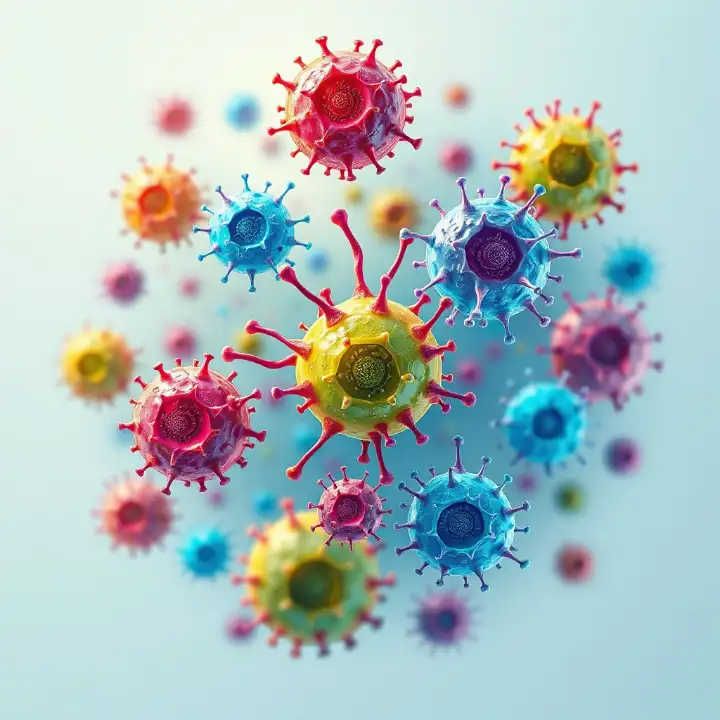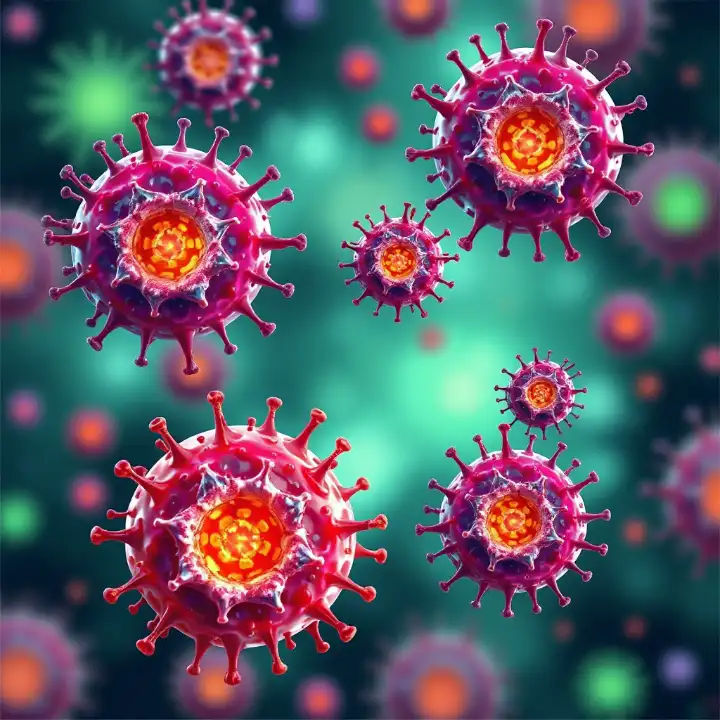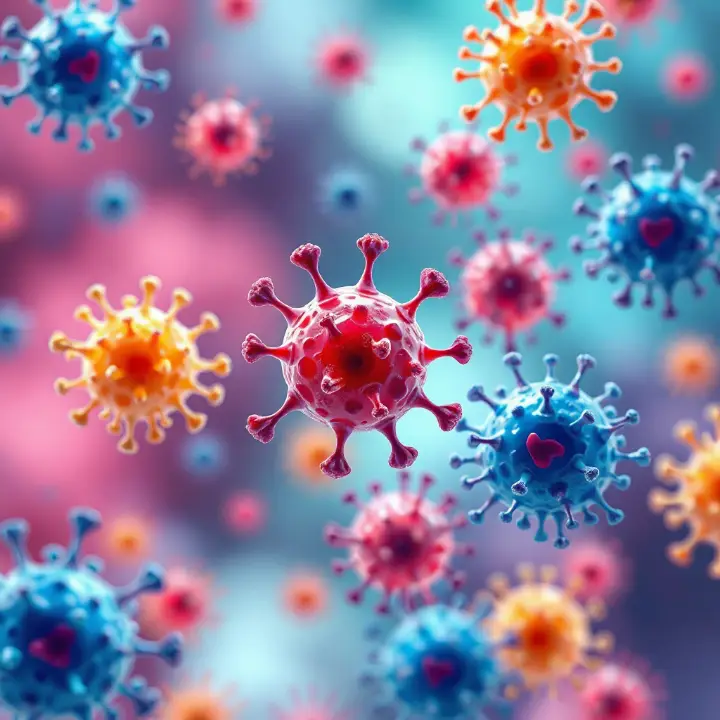What Is Merkel Cell Carcinoma and How to Identify It

Merkel cell carcinoma is a rare but aggressive type of skin cancer. It often appears as painless, fast-growing nodules on areas of your skin exposed to the sun, such as the face, neck, or arms. Early detection plays a critical role in improving outcomes.
Five-year survival rates for this cancer range from 30% to 50%. Early detection, especially at Stage 1, significantly improves these odds. Younger individuals tend to have better outcomes compared to those over 80 or those with advanced cancer.
Pay close attention to any unusual skin changes. Identifying this condition early could save your life.
Key Takeaways
Merkel cell carcinoma is a rare but fast-growing skin cancer. Finding it early can save lives.
Watch for painless, fast-growing lumps on sun-exposed skin. See a skin doctor if you notice anything unusual.
Protect your skin from UV rays by using sunscreen. Stay away from tanning beds to lower your risk.
Check your skin every month for new or changing spots. This is especially important if you're over 50 or have a weak immune system.
If you think you have Merkel cell carcinoma, act fast. Early treatment can greatly improve your chances of survival.
What Is Merkel Cell Carcinoma?
Definition and Overview
Merkel cell carcinoma is a rare type of skin cancer that begins in Merkel cells. These cells are neuroendocrine cells found in the skin, responsible for sensing touch. This cancer is one of the most aggressive forms of skin cancer. It spreads faster and more widely than common types like basal cell carcinoma or squamous cell carcinoma.
Although rare, with about 3,000 new cases diagnosed annually in the U.S., its incidence is rising. Globally, approximately 0.6 new cases per 100,000 people are reported each year. This rate has doubled since the late 20th century.
Why It Is Considered Aggressive
Merkel cell carcinoma is aggressive because it grows quickly and has a high likelihood of spreading (metastasizing). It often recurs within two to three years after treatment.
It spreads through the lymphatic system, leading to local recurrences or distant metastases.
Thicker tumors are more likely to invade lymph nodes in areas like the neck, armpits, or groin.
Even after treatment, the cancer may return, making early detection crucial.
This aggressive nature makes it essential to monitor any unusual skin changes closely.
Causes and Risk Factors
Several factors contribute to the development of Merkel cell carcinoma:
Merkel cell polyomavirus infection: About 80% of cases in the U.S. are linked to this virus, which is common but usually harmless.
Ultraviolet (UV) radiation exposure: Prolonged exposure to sunlight or tanning beds can damage DNA in skin cells, leading to cancer.
Weakened immune system: Conditions or medications that suppress the immune system increase the risk.
Other factors:
Age: Most cases occur in people over 50.
Gender: Men are more likely to develop this cancer.
Skin type: Individuals with light skin have a higher risk, though it can affect anyone.
Protecting your skin from UV rays and maintaining a healthy immune system can help reduce your risk.
Symptoms of Merkel Cell Carcinoma

Key Characteristics
Merkel cell carcinoma often begins as a small, painless bump on your skin. These bumps grow rapidly and may appear shiny or dome-shaped. They are usually pink, red, or purple in color. Unlike inflamed cysts, these nodules do not feel tender.
You might notice that the skin on the bump breaks open or bleeds. This cancer grows quickly, so you may also see new lumps forming nearby or experience swelling in your lymph nodes.
Tip: If you spot a rapidly growing, painless bump that looks unusual, consult a dermatologist immediately. Early detection can make a significant difference.
Common Locations on the Body
Merkel cell carcinoma typically develops on areas of your skin that receive the most sun exposure. These include the head, neck, face, and arms. About half of all cases occur in the head and neck region. However, it can also appear in less exposed areas like the buttocks or scalp.
Protecting your skin from UV rays can help reduce the risk of developing this cancer in these vulnerable areas.
How It Differs from Other Skin Conditions
Merkel cell carcinoma differs from benign skin growths and other skin cancers in several ways. It grows much faster than basal cell carcinoma and often appears as a solitary, irregular nodule. While melanoma can also grow quickly, it is usually dark brown or black, unlike the red or purple color of Merkel cell carcinoma.
Benign cysts may grow quickly, but they are often tender, unlike the painless nature of Merkel cell carcinoma. Additionally, benign growths rarely exhibit the rapid enlargement or irregular shape seen in this aggressive cancer.
Note: Merkel cell carcinoma can sometimes resemble acne or cysts, leading to misdiagnosis. Always seek medical advice if you notice unusual skin changes.
Risk Factors and Warning Signs

The AEIOU Criteria
Doctors often use the AEIOU criteria to identify Merkel cell carcinoma. This system highlights five key characteristics commonly seen in patients:
A: Asymptomatic or non-tender lesions
E: Expanding rapidly, often within three months
I: Immune suppression, such as from medications or illnesses
O: Older than 50 years
U: UV-exposed fair skin
Most patients with Merkel cell carcinoma meet at least three of these criteria. For example, about 88% of cases involve painless lesions, while 90% occur in individuals over 50. The table below summarizes the prevalence of each criterion:
Criteria | Description | Prevalence |
|---|---|---|
A | Asymptomatic | ~88% |
E | Expanding rapidly | ~63% |
I | Immune suppression | ~8% |
O | Older than 50 years | ~90% |
U | UV-exposed skin | ~81% |
If you notice a rapidly growing, painless bump on sun-exposed skin, especially if you are older or immunosuppressed, consult a dermatologist promptly.
Other Warning Signs to Watch For
Merkel cell carcinoma often begins as a shiny, painless bump that is pink, red, or purple. These tumors grow quickly and may spread to nearby skin or lymph nodes, which can feel like lumps under the skin.
To detect this cancer early, monitor your skin for the following:
New or changing lesions, especially on sun-exposed areas.
Rapidly expanding growths that are not tender.
Lumps in the skin or lymph nodes near a previous lesion.
Lesions in individuals over 50 or those with weakened immune systems.
Tip: Regular self-examinations can help you spot unusual changes early. If you notice any of these signs, seek medical advice immediately.
Challenges in Diagnosing Merkel Cell Carcinoma
Why It Is Often Misdiagnosed
Diagnosing Merkel cell carcinoma can be challenging because its early symptoms often mimic benign skin conditions. Many lesions appear as dome-shaped nodules that resemble cysts, lipomas, or infected hair follicles. These similarities frequently lead to misdiagnoses. In fact, studies show that 56% of cases are initially mistaken for non-cancerous conditions.
Healthcare providers, including dermatologists, sometimes struggle to identify this cancer due to its rare occurrence and benign appearance. Small tumors may also resemble acne or other common skin issues, further complicating diagnosis. Pathologic evaluation of excised lesions is essential for accurate identification. Without this step, delays in treatment can occur, reducing the chances of successful outcomes.
Tip: If you notice a rapidly growing, painless bump, insist on a thorough evaluation. Early action can prevent misdiagnosis and improve your prognosis.
Importance of Early Detection
Early detection of Merkel cell carcinoma significantly improves survival rates. When diagnosed at an early stage, 75% of patients survive five years or more. However, survival rates drop sharply if the cancer spreads. For instance, patients with distant metastases face survival rates as low as 13%.
Detection Timing | Survival Rate (5 years or more) |
|---|---|
Early Detection | |
Late Detection | Decreases significantly |
Detecting this cancer early allows for treatment while the tumor is still small and localized. This reduces the risk of metastasis and improves long-term outcomes. Regular self-examinations and prompt medical consultations play a vital role in catching this aggressive cancer before it advances.
Note: Merkel cell carcinoma is one of the most aggressive skin cancers. Early diagnosis can save lives by enabling timely and effective treatment.
What to Do If You Suspect Merkel Cell Carcinoma
Immediate Steps to Take
If you suspect Merkel cell carcinoma, act quickly. Early detection can significantly improve your chances of successful treatment. Follow these steps:
Schedule a medical evaluation immediately if you notice any unusual lumps, bumps, or growths on your skin.
Pay close attention to new or changing spots, especially those that grow rapidly or appear on sun-exposed areas.
Consult a dermatologist as soon as possible to rule out serious conditions.
Tip: Don’t ignore painless, fast-growing nodules. Even if they seem harmless, prompt medical attention is essential.
Early action can make a life-saving difference. Doctors can perform a biopsy to confirm the diagnosis and begin treatment without delay.
Preventative Measures
You can reduce your risk of developing Merkel cell carcinoma by taking proactive steps to protect your skin and maintain your overall health:
Limit UV exposure: Seek shade, wear protective clothing, and apply sunscreen with a high SPF when outdoors.
Avoid tanning beds and sunlamps: These devices emit harmful UV rays that increase your risk of skin cancer.
Practice sun safety: Remember that sunlight is the primary source of UV rays. Protect areas like your face, neck, and arms, which are most vulnerable.
Strengthen your immune system: Manage conditions like HIV or autoimmune diseases and discuss the risks of immunosuppressive treatments with your doctor.
Reminder: Most cases of Merkel cell carcinoma occur on sun-exposed areas. Consistent sun protection can significantly lower your risk.
By adopting these measures, you can safeguard your skin and reduce the likelihood of developing this aggressive cancer.
Early detection of Merkel cell carcinoma can save lives. By understanding its symptoms and risk factors, you can take control of your health. Regular self-examinations are essential. Check your skin monthly in a well-lit room using a full-length mirror. Use a hand-held mirror for hard-to-see areas like your back or thighs. Examine all parts of your body, including your scalp, palms, and soles. Ask a partner for help if needed. Look for new or changing spots and consult a doctor if you notice anything unusual.
Visiting a dermatologist regularly is equally important. These checkups allow for early identification of skin changes, which significantly improves survival rates. Protecting your skin from UV rays by wearing sunscreen and avoiding tanning beds also reduces your risk. Taking these proactive steps ensures you stay ahead of this aggressive cancer.
FAQ
What makes Merkel cell carcinoma different from other skin cancers?
Merkel cell carcinoma grows faster and spreads more aggressively than most skin cancers. It often appears as a painless, shiny bump, unlike melanoma, which is usually dark. Early detection is crucial because this cancer metastasizes quickly.
Can young people develop Merkel cell carcinoma?
Although it primarily affects individuals over 50, younger people can develop it too. Risk increases with prolonged UV exposure or a weakened immune system. Protecting your skin and monitoring changes are essential at any age.
How is Merkel cell carcinoma diagnosed?
Doctors diagnose it through a biopsy. They remove a sample of the suspicious lesion and examine it under a microscope. This step confirms whether the growth is cancerous and determines the best treatment plan.
Is Merkel cell carcinoma preventable?
You can reduce your risk by limiting UV exposure, wearing sunscreen, and avoiding tanning beds. Strengthening your immune system and performing regular skin checks also help in prevention.
What should you do if treatment is delayed?
If treatment is delayed, consult a specialist immediately. Discuss options like surgery, radiation, or immunotherapy. Early action improves outcomes, even if the cancer has progressed.
Tip: Always prioritize follow-ups with your doctor to monitor progress and adjust treatment plans as needed.
---
ℹ️ Explore more: Read our Comprehensive Guide to All Known Cancer Types for symptoms, causes, and treatments.
See Also
Understanding Basal Cell Carcinoma and Its Symptoms Explained
Cervical Cancer Explained: Recognizing Its Symptoms Effectively
Choriocarcinoma Overview: Understanding Treatment Options Available
Recognizing Symptoms of Leiomyosarcoma: A Comprehensive Guide
Key Features of Keratoacanthoma: Understanding This Skin Condition
